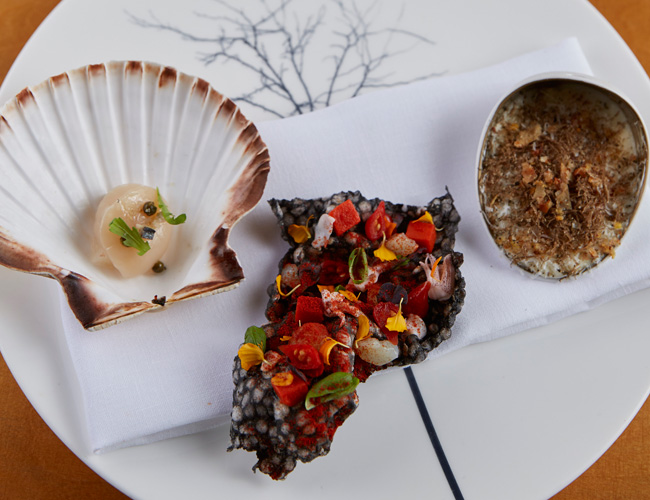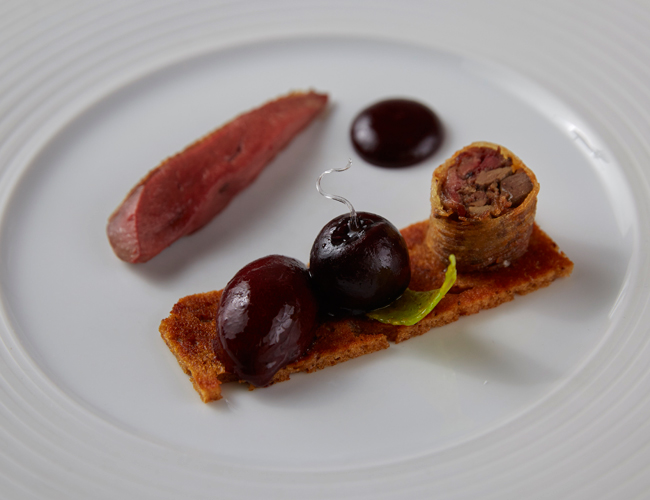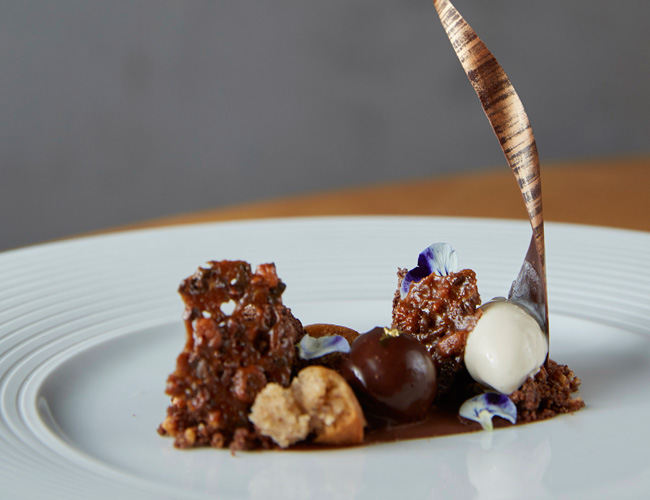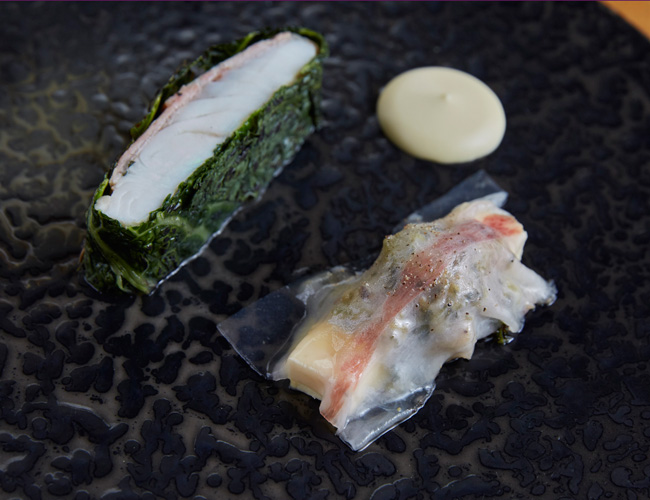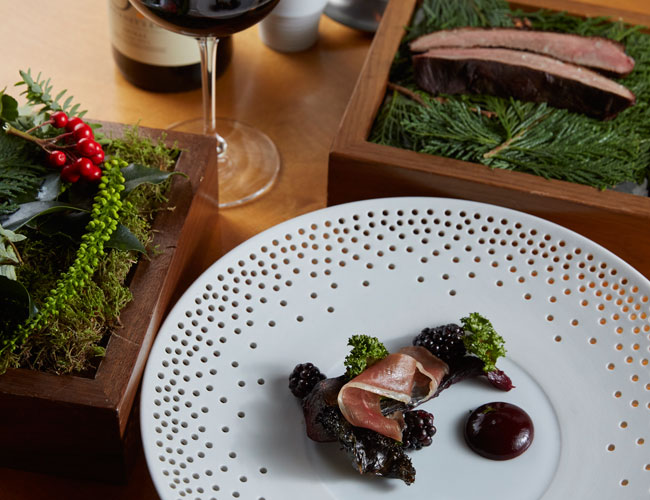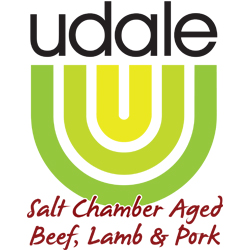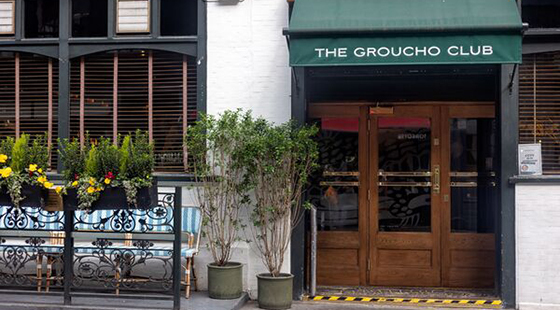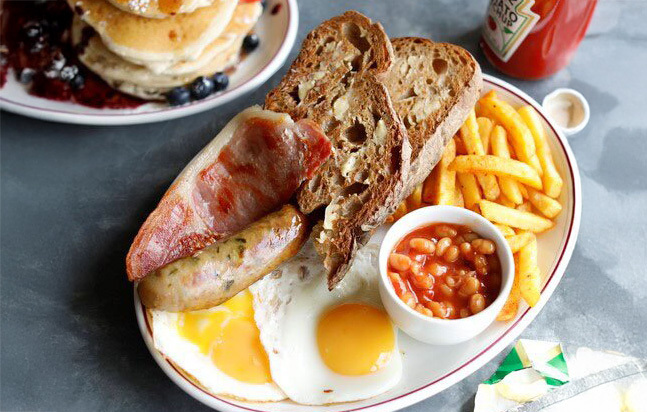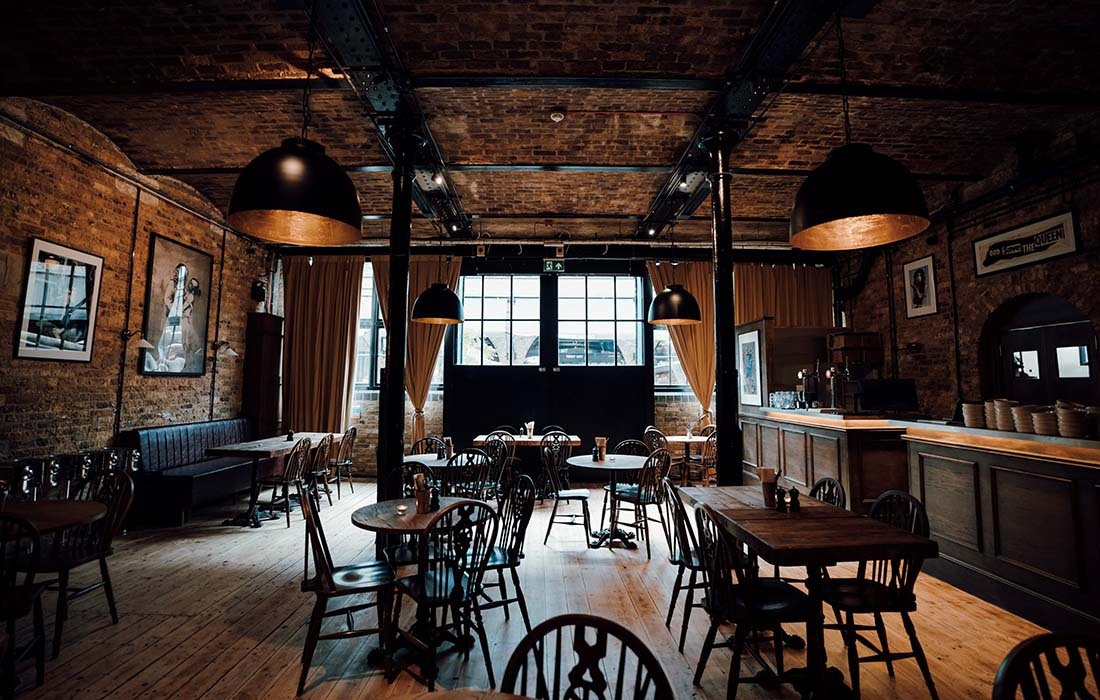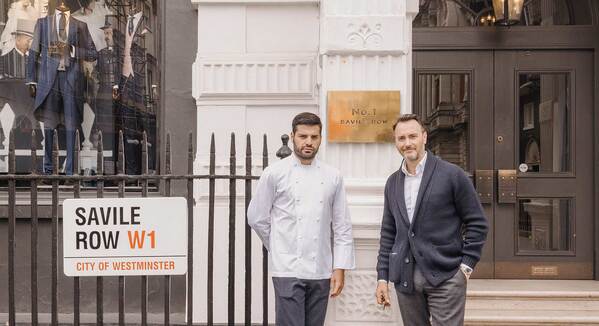Chef Eats Out: Aiden Byrne hosts at Manchester House
Aiden Byrne welcomed chefs and colleagues from all corners of Britain for our most recent Chef Eats Out event, run in association with Udale Speciality Foods. Katherine Price reports
It's November, and a chilly autumn wind is whistling through the financial district of Manchester. For 65 fortunate chefs and industry professionals, however, a warm welcome is awaiting them beyond the doors of the four-AA-rosette Manchester House, and its chef-patron Aiden Byrne is eagerly anticipating his guests' arrival
Merseyside-born Byrne is famed for being the youngest chef to head up a Michelin-starred kitchen, at David Adlard's eponymous restaurant in Norwich in the mid-1990s. And following a career that has seen him enjoy roles at Pied à Terre, the Dorchester Grill and Restaurant Tom Aikens in London, Roscoff in Belfast, and Danesfield House near Marlow, Buckinghamshire, in 2010, he was seduced by the bright lights of the city, and opened Manchester House in a joint venture with North West powerhouse Living Ventures.
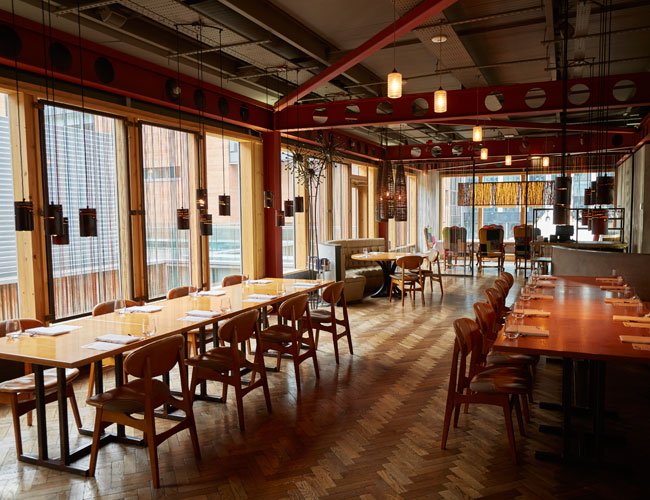
Commenting on the prospect of cooking for a restaurant full of industry professionals, he says the experience is âquite nerve-rackingâ.
âI wanted to get as many of our signature dishes as possible in one full menu, but also ones that are a true reflection of the season. I think weâve done that,â he tells diners.
Asked about the development of his menu over the years, Byrne adds that his cooking has more recently gone back to basics. âI came up with a menu to open this place, which wasnât really reflective of me as a chef or a person, and I think over the last few years Iâve definitely gone back to cooking from my heart as opposed to trying to impress people. What we were trying to do before was trying to be too clever.â
The meal kicks off with Byrneâs famous sour dough with roasted chicken butter, and a platter of three starters â" a squid ink tapioca cracker with cured lemon sole, pickled Chipiron squid and smoked red pepper jelly; baked potato soup with crisp chicken skin, foie gras ballotine and Pink Fir apples; and scallop cured with sushi vinegar, green peppercorns, salted anchovies and pickled turnip.
Several guests agree the next course â" squab pigeon with gingerbread, offal wrapped in crispy potato strands and a constructed âcherryâ filled with foie gras, was a strong dish for both its taste and technique.
John Connell, head chef at Blue Fish Catering, says: âItâs really well balanced, really clever and a nice flavour. You can be a critic but youâve got to understand what goes into it and we all do â" we appreciate it.â
A dish of grilled turbot with Savoy cabbage, Garstand White and confit cèpe goes down particularly well with the chefs. âIâm really enjoying the flavours,â says Alex Waegh, sous chef at the Stoke by Nayland hotel. âThe cheese purée is my favourite part of the whole dishâ, while Sally Walker of Blue Fish Catering describes it as rich and really well-cooked.
The next two courses â" crispy braised Bellota pigâs cheeks, pear salad and burnt onion; and blackberries and an elderberry purée cutting through the sweetness of a salt-aged Goosnargh duck (fresh from Udaleâs Himalayan salt chambers) â" are equally well received by the diners, the subtle flavouring of the duck and its melt-in-the-mouth texture a highlight for many.
An olive oil sorbet with fig jam and goatâs cheese mousse preceded the finale â" and Nick Galer and John Gillham, chef and junior sous chef at the Miller of Mansfield in Goring, Oxfordshire, both agreed it was their favourite dish. âI thought it was excellently balanced and delicious,â says Galer. âIt was the one that I found really interesting and I could taste all the bits that were meant to be tasted.â
Gillham enthuses: âThe sorbet was so simple, and a really nice surprise. Of course, we expected a very high level of cooking, as well as a few things we havenât seen before.â
Galer adds: âI think it was fascinating in terms of the plating and in terms of the combinations. We only had sauce with one thing. I think thatâs quite interesting.â
As for the restaurant itself, Gillham and Galer love the âcool and modernâ vibe. âThe place has a really nice feel to it,â adds Galer.
Chef Andrew Nutter of Nutters restaurant in Rochdale found it particularly useful to bring a junior chef to experience the restaurant. He comments: âItâs such an exciting opportunity for a younger member of my team to see first-hand the talents of Aidenâs kitchen. The whole day has been such an eye-opener for him â" seeing the different styles of food, the presentation â" and also very valuable is the opportunity for him to converse with other restaurateurs and industry peers.â
As the guests have the chance to observe the kitchen and, eventually, disperse, a relieved Byrne says he feels the event has gone well. âI was quite nervous about having a restaurant full of chefs,â he says candidly. âYou can see everything in this restaurant â" I can see the expressions on their faces, they can see whatâs going on in the kitchen. But I think everyone enjoyed themselves. I did a round of the tables and everyone seemed quite complimentary; you donât usually get that from chefs.â
Honest, gutsy â" figuratively speaking, Byrneâs heart was in each and every dish. And, by the sound of it, his peer group approves.
Manchester House: a taste of the menu
- Sourdough with roasted chicken butter
- Squid ink tapioca cracker, cured lemon sole, pickled Chipiron squid and smoked red pepper jelly
- Baked potato soup, crisp chicken skin, foie gras ballotine and Pink Fir apples
- Scallop cured with sushi vinegar, green peppercorns, salted anchovies and pickled turnip
- Squab pigeon with gingerbread, cherries and foie gras
- Grilled turbot with Savoy cabbage, Garstang White and confit cèpe
- Braised Bellota pigsâ cheeks, pear salad and burnt onion
- Salt-aged Goosnargh duck with blackberries, juniper and gin
- Olive oil sorbet, fig jam and goatâs cheese mousse
- Homemade 70% bitter chocolate
The wines
- Veuve Clicquot Brut NV, Reims, France
- Riesling âHâ Rheingau Prinz Von Hessen 2014, Rheingau, Germany
- Sangiovese di Romagna 2013, Nespoli, Romagna, Italy
- Catena Chardonnay 2014, Mendoza, Argentina
- Vilosell Tomas 2013, Costers Del Segre, Spain
- Journeyâs End Shiraz 2011, Stellenbosch, South Africa
- Lugana 2015, Bulgarini, Italy
The wines for the event were chosen in co-ordination with the generosity of MHUK, Matthew Clark and Bibendum Wines.
Christopher Cooper of Drinkonomics, who curates the wine lists for the Living Ventures Group, comments: âFor this event, as with all events at Manchester House, we were challenged to come up with wines to perfectly match Aidenâs carefully crafted eclectic tasting menu.
âBeing one of the best chefs in the country and a total stickler for flavour balance in every dish, Aiden creates wonderfully considered and complete dishes, so that often doesnât leave much room for error when selecting a complementary grape, region or flavour profile.
âAfter a great deal of trial and error, we came up with the following matches…
âThe perfect foil to the cured lemon sole and the crunchy freshness of the rice cracker is the arrival Champagne that is the Veuve Clicquot Yellow Label NV. The bubbles lift the aromatics of the pickles and smoky pepper jelly, creating an olfactory taste sensation.
âItâs not a problem to go back and forward between red and white wines on a tasting menu as its the weight of the dish thatâs the consideration rather than colour; and with the squab pigeon with gingerbread, cherries and foie gras, they all combine to create a tough trifecta for a wine match. Yet this more aromatic and savoury Sangiovese from Emilia Romagna really balances with the sweetness, tartness and texture of Aidenâs tricky trio.
âThe grilled turbot with Savoy cabbage, Garstang White and confit cèpe dish can often prove to be quite a tricky one [to match]. Certain wines can either overwhelm the dish if youâre trying to match the sublime Garstang White cheese, or possibly not even register on the palate if you were trying to pair them with the delicate flavours of the turbot; but the Catena Chardonnay from Mendoza does both.
âFor the braised Bellota pigâs cheek, Aiden has created an amazing dish of many contrasts; intensity balanced with elegance and freshness, which means that any wine pairing has to be all of those things and more. With this Tempranillo, Syrah, Merlot blend from Catalunya the dish is brought into the olfactory senses once more by Vilosell, Bodegas Tomas Cusine, Costers del Segreâs savoury aromatics and textures.
âFinally, Lugana, Bulgarini from Lombardia to serve with the olive oil sorbet, fig jam and goatâs cheese mousse. With many elements in a dish, some wine flavours can often be overwhelming or simply unnoticeable, but this has the right amount of acidity and freshness to perfectly balance this dish.â
A message from our sponsor
Udale Speciality Foods sponsored Chef Eats Out at Manchester House. Rob Perrier of Udale explains why the fresh produce supplier uses Himalayan salt bricks to age meat.
Ageing meat in a Himalayan salt chamber is the perfect combination of old meets new. Taking the idea from thousands of years ago â" when meat was preserved and kept longer using salt â" and combining it with modern refrigeration techniques has taken Udaleâs meat to new heights.
Our Himalayan salt chamber is constructed with more than 4,000 Himalayan salt bricks.
Selecting only the best cuts, the meat is then placed in the salt chamber to age. Depending on what the product is, it may be aged from four days up to more than 100 â" the environment inside the salt chamber results in beef, lamb, venison, pork and duck with a fantastically enhanced concentration of flavour.
Pink Himalayan salt is one of the most powerful ingredients in the world. It is 100% natural and unrefined; in fact, it is the highest grade of natural salt you can find. The richer flavour and increased tenderness in the meat is achieved because the muscle tissue of the meat breaks down thanks to the natural enzymes working their magic during the ageing process.
The extra flavour is not the only benefit of using Himalayan salt bricks when ageing meat, though. The salt bricks actually act as a natural antimicrobial because of their chemical components. This helps to kill bacteria in the dry ageing room and helps give a fresher, purer atmosphere.
Manchester House would like to thank Udale Speciality Foods, Wellocks, Matthew Clark, Bibendum and Neve of Fleetwood for their support of Chef Eats Out.



